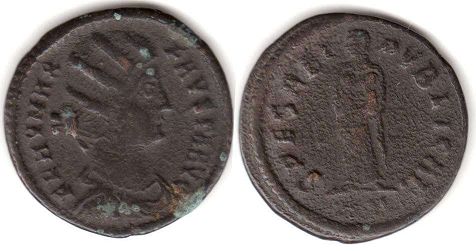Coins of Fausta - catalog with values
Roman Empress (290-326)
Wife of Constantine I.

FLAV MAX FAVSTA AVG
SPES REIPVBLICAE
326-327
copper
Rome
19 mm.
Draped bust right / Flavia Maximiana Fausta Augusta
Salus standing left, holds child in every hand / Hope of Republic
Coin value ~ US$50-70
Costs of Fausta coins in this catalog approximate and indicated specifically for the coin shown in the picture.
I do not buy or sell coins - this is just a catalog.
See other coins of Imperial Rome.

